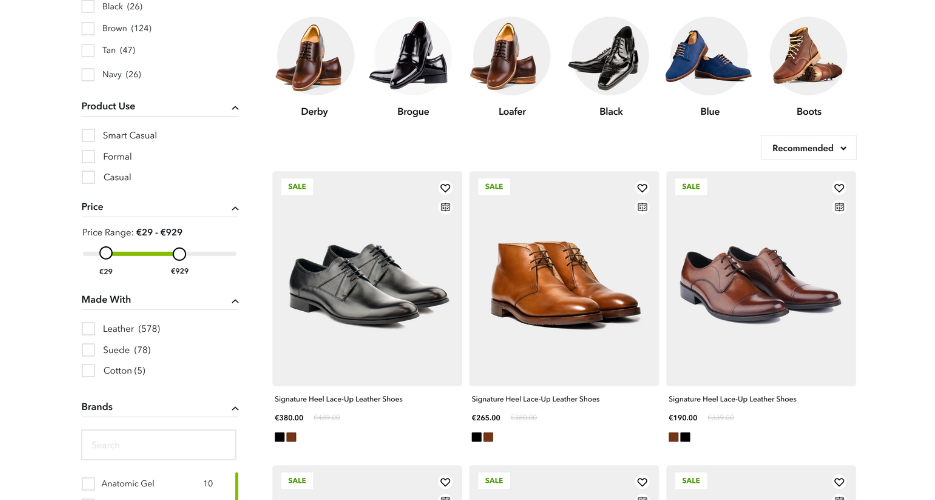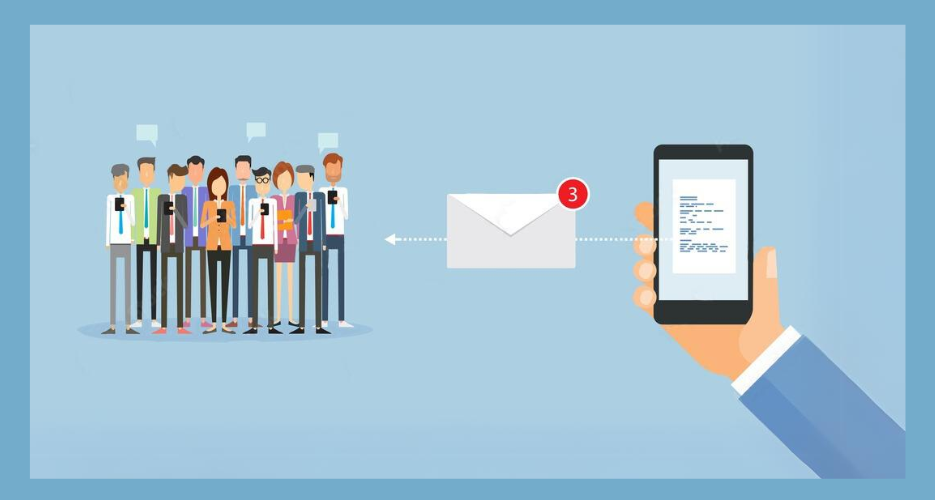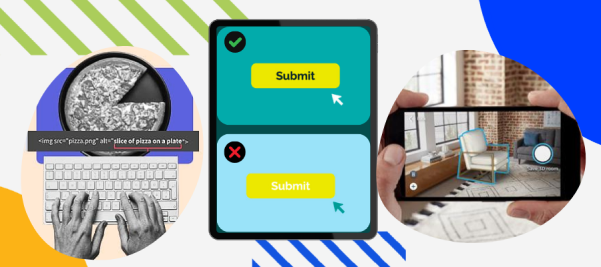What is CX and why is it important?
Customer experience is the impression you leave with a customer, resulting in how they think of your brand, across every stage of the customer journey
Customer experience directly impacts the success and profitability of the business. Here are some reasons why CX is important:
- Customer Satisfaction: Providing a positive and seamless shopping experience leads to higher customer satisfaction. Satisfied customers are more likely to make repeat purchases, provide positive reviews, and recommend the store to others, which helps in building brand loyalty.
- Competitive Advantage: In the highly competitive ecommerce landscape, offering exceptional CX sets a store apart from its competitors. When customers have a great experience, they are more likely to choose that particular store over others, even if the prices are slightly higher.
- Increased Conversion Rates: When customers find it convenient and enjoyable to shop on an ecommerce store, they are more likely to complete their purchase. A well-designed and user-friendly website, clear product information, easy navigation, and a streamlined checkout process all contribute to higher conversion rates.
- Reduced Cart Abandonment: By optimizing the CX, addressing pain points, and streamlining the checkout process, stores can reduce cart abandonment rates.
- Customer Retention and Lifetime Value: A positive CX fosters customer loyalty and retention. When customers have a great experience, they are more likely to return to the store for future purchases. Repeat customers have higher lifetime value, as they spend more over time and are less likely to be influenced by competitors.
- Brand Reputation: CX directly influences a store's brand reputation. Positive experiences lead to positive word-of-mouth, online reviews, and social media recommendations, which enhance the store's reputation. Negative experiences can damage the brand's image and result in negative reviews, potentially deterring new customers.
- Insights for Improvement: Paying attention to CX allows eCommerce stores to gather valuable feedback and insights from customers. By analyzing customer behavior, preferences, and pain points, stores can identify areas for improvement, optimize their processes, and provide a better overall experience.

What’s the difference between UX and CX?
UX primarily relates to the interaction between users and a specific product or service. It is often confined to the immediate context of the product or service, emphasizing the interaction within that specific system. It primarily focuses on optimizing the user journey, minimizing friction, and ensuring an efficient and effective interaction flow.
CX is focused on improving a person's experience with a company, at all touchpoints. CX takes into account the customer's end-to-end journey and includes interactions across multiple channels and touchpoints, such as customer service, marketing, sales, packaging, delivery, post-purchase support, and more. It aims to create a seamless and consistent experience across all customer touchpoints.
Both are based on emotion and understanding the customer’s needs to be able to build a positive emotional experience. However CX encompasses the broader range of interactions and touchpoints a customer has with an entire brand or organization throughout their entire lifecycle. It includes all aspects of the customer's relationship with the company, both online and offline, beyond just the digital product or service.

The digitised customer journey
The main goal of a customer experience design strategy is to align business goals and customer interaction with a brand for a consistent and positive experience during the customer journey. Here’s an outline of the different touchpoints your customer will have with your brand while shopping online.
Entering the store
Beginning with search engines, multiple campaigns and promoted links. These can bring customers into the store. The goal is to have the most relevant content as the first thing they see.
Discover and be inspired
From homepage through to product detail page (outlined in more detail below). The journey needs to feel consistent and engagement maintained through storytelling and relevant content.
Choosing a product
The customer needs the right information at the right time, with content that builds confidence. Whether a customer new to the brand or a returning customer.
Checkout
Keeping the journey simple and efficient will reduce opportunities for customers to abandon their basket.
Post purchase
Consistency in the packaging and quality of product. Right through to follow up marketing campaigns and customer service.
Here’s a wonderful example of the perfect post purchase experience from our friends at Faerly.ie

Consistent experiences through design
In ecommerce, “omnichannel” is often used to describe a holistic approach that integrates multiple channels and touchpoints to provide a seamless and consistent customer experience. It’s about breaking down barriers between online and offline to create a cohesive experience between both.
We’re going to look at the key areas of your ecommerce store to identify how you can amplify and enhance the experience across each.
Homepage
First impressions count: Make sure it is well presented and 'on brand'.
Focus on the user: It should be designed with the user in mind, with a clear understanding of their needs and preferences.
Easy to navigate: Customers should be able to find what they are looking for quickly and easily.
Enhanced landing page
An enhanced landing page is another way of building a positive customer experience.
Enhanced landing pages are landing pages that are optimised and improved to maximise effectiveness in achieving specific goals, such as increasing conversions, generating leads, or driving specific actions from visitors. It goes beyond a basic landing page by incorporating various elements and strategies to enhance its performance and impact.
You may wish to use enhanced landing pages for a particular brand, category or luxury product.
You can include elements such as:
- Attractive imagery and videos
- List of benefits
- Contact forms
- Reviews
- Detailed product specs
- Cross selling suggestions
Product listing page (PLP)
An Enhanced Listing page moves the page on from being just a catalogue to an experience. Some areas we focus on for PLPs include:
- Imagery - high quality, attractive, including lifestyle if possible
- Banner images
- Filters
- Focus on content
Expert tips for your PLP
We can use the content to tell a story and guide the user to the relevant products they’re looking for.
Consider wayfinding on your PLP to simplify the journey. Adding an easily accessible way of finding category options within the design also helps visitors to find what they are looking for. For example, you may have a landing page for office shoes which you can then break up into category styles such as Derby, Brogue, Loafer to further simplify the journey.
When we shop online we can't touch or try on the products, so by using lifestyle shots and video we are able to bring the items to life and allow the customer to understand what it might be like in real life or be inspired by them.
Don't forget to include a brand element. Use colours from the logo to both connect the page to the brand and also visually help guide the user down the page.
Product description page
The goal of this page is to inform the customer about the product to help remove barriers to conversion and give them as many reasons to purchase as possible. Ecommerce teams should work with their buying teams to gather as much information as possible and present it in an engaging manner with quality content, product specs and reviews.
What’s a PXP?
A PXP means Product Experience Page and it is the ultimate landing page. It inspires and captivates the shopper, building engagement with an emphasis on product storytelling.
Things you should include to create a PXP:
- Detailed and engaging product description
- High-quality images and videos are included to showcase the product from different angles and demonstrate its functionality.
- Price of the product, any available discounts or promotions, and its availability in terms of stock or delivery options.
- Customer reviews and ratings to provide social proof .
- Related products or recommendations to encourage upselling and cross-selling opportunities.
- Add to cart and checkout options.
Every ecommerce business is different, some are selling a set of specific products while others are selling thousands of products. For those selling too many products to achieve a great PXP across all, we recommend choosing your most valuable products and creating PXPs for them.
Building your CX strategy
StudioForty9 was founded over 15 years ago and has been creating online retail experiences before online shopping had truly even taken off.
With virtually all businesses now online and major players in the game such as ASOS, Amazon and many others, competing for your customers’ attention online is at an all time high. Customer experience design is the future for creating online experiences that will drive conversion, retention and brand loyalty.
Our experts are constantly evolving and refining their knowledge and expertise to support our clients in delivering ecommerce stores that are designed to meet each client’s unique business needs. Lean on our talented and highly experienced design team to work alongside you in creating experiences that convert.
Email info@studioforty9.com to talk to our experts about building your enhanced customer experience strategy.
Photos by Edho Pratama and Igor Miske on Unsplash




